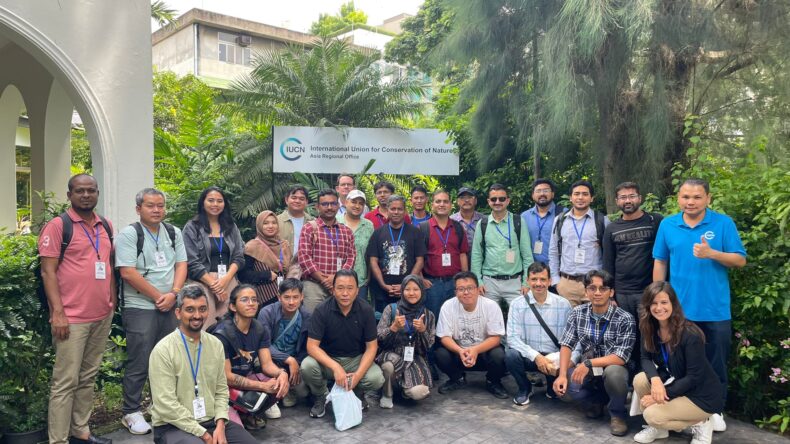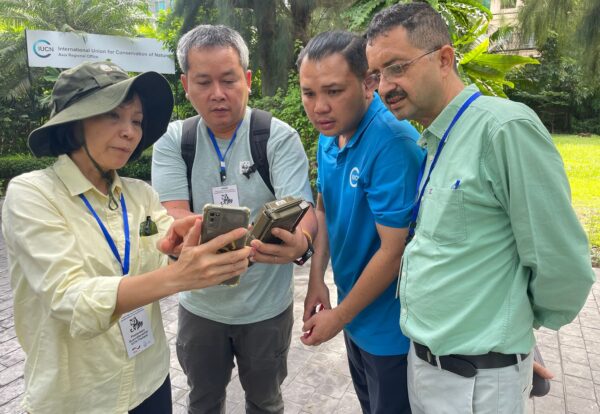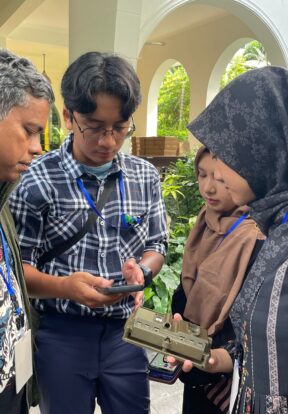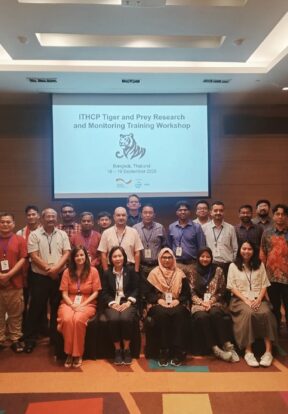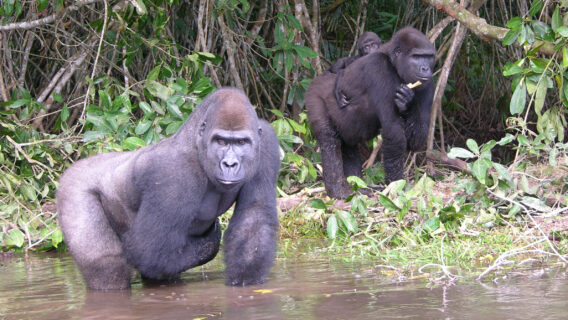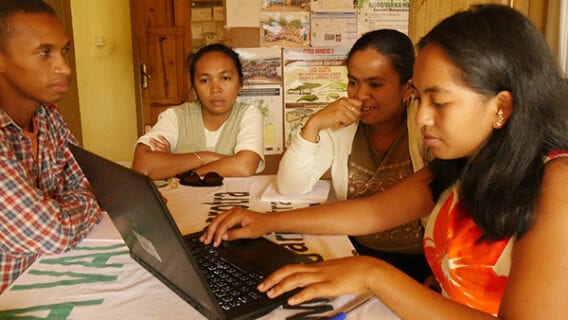As the world races to secure the future of wild tigers, conservationists agree on one essential truth: without reliable data, there can be no informed action. From understanding where tigers roam to gauging whether prey populations can sustain them, monitoring is the foundation of effective conservation. Yet for many practitioners working on the ground, the technical challenges of collecting and analysing this data remain significant.
To help close this gap, the IUCN Integrated Tiger Habitat Conservation Programme (ITHCP) convened a four-day regional training workshop on tiger and prey research in Bangkok, Thailand (16-19 September 2025). The event brought together 29 participants from seven tiger range countries – Bhutan, Nepal, India, Bangladesh, Myanmar, Indonesia, and Thailand – along with IUCN focal points from the region.
Led by Dr. Abishek Harihar, Conservation Scientist at Panthera, the workshop blended theory with field application. Participants learned the latest techniques in tiger monitoring, from spatial capture-recapture analysis using camera traps to innovative prey monitoring methods such as occupancy and random encounter models. They also tackled the less visible but equally critical aspects of conservation science: managing datasets, maintaining quality standards, and aligning results with global reporting frameworks.
Equally important, the workshop fostered regional collaboration. Participants established a dedicated network to exchange knowledge and provide mutual support as they apply their learning in the field, a step that not only strengthens practice on the ground but also enhances cross-border cooperation, vital for a transboundary species like the tiger.
For ITHCP, this training is part of a broader vision: building the technical and institutional capacity needed to secure healthy tiger populations and resilient ecosystems across Asia. By connecting field practice with policy frameworks, the programme ensures that data collected in forests and grasslands can shape decisions made in ministries and international forums alike.
As the world looks ahead to 2030 and beyond, strengthening this link between science, practice, and policy will be key to securing the future of wild tigers and the ecosystems they represent.

